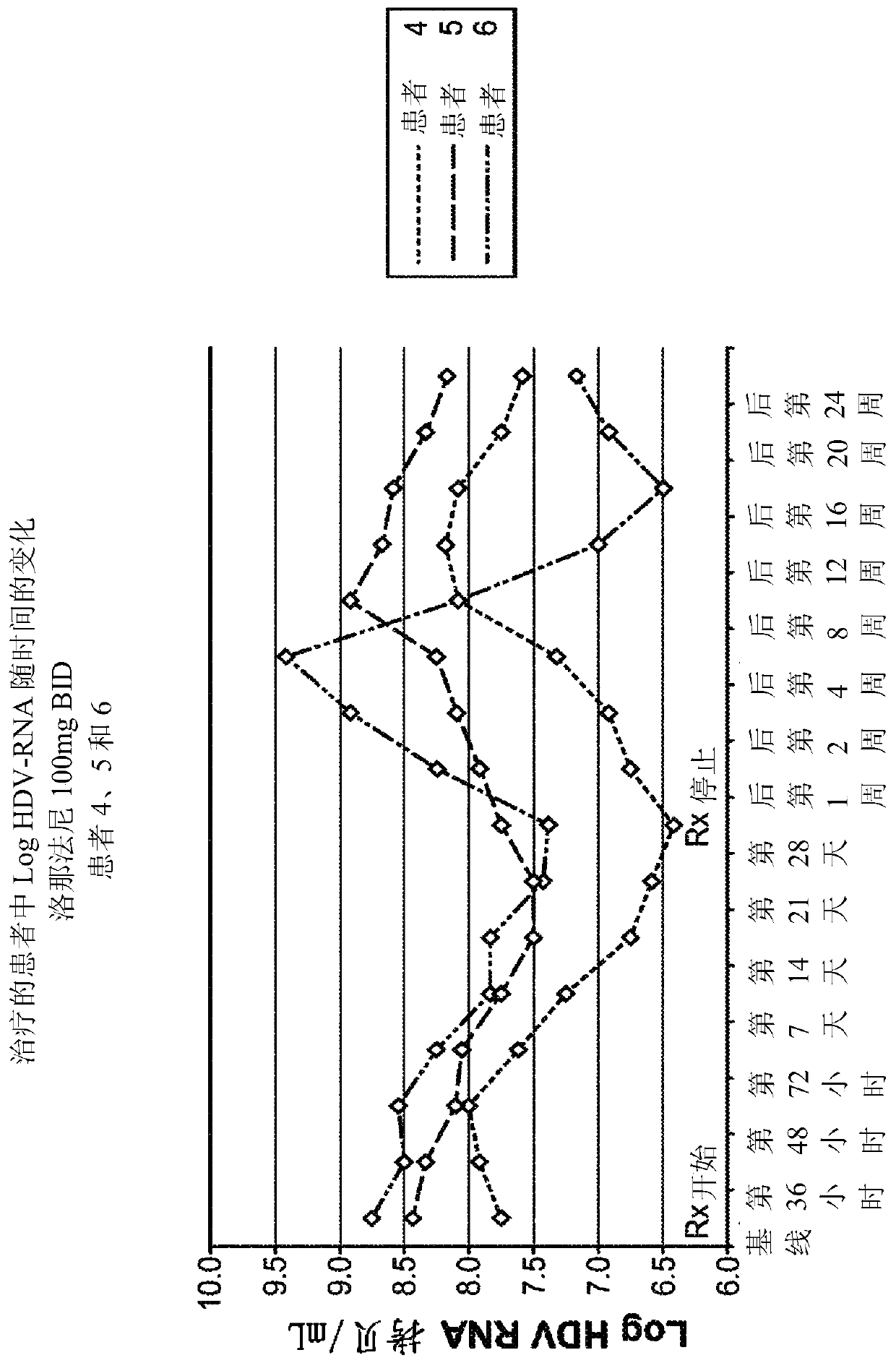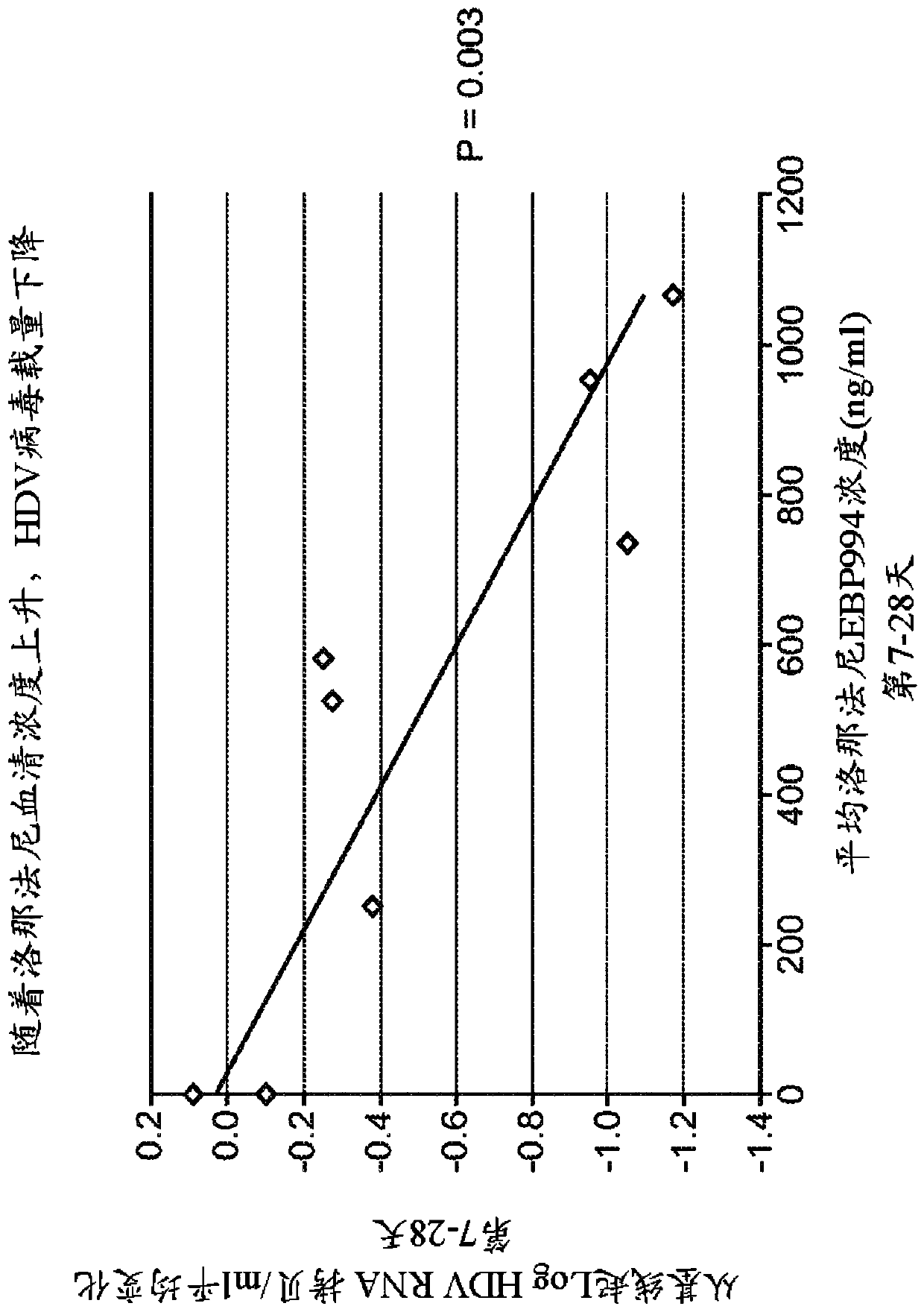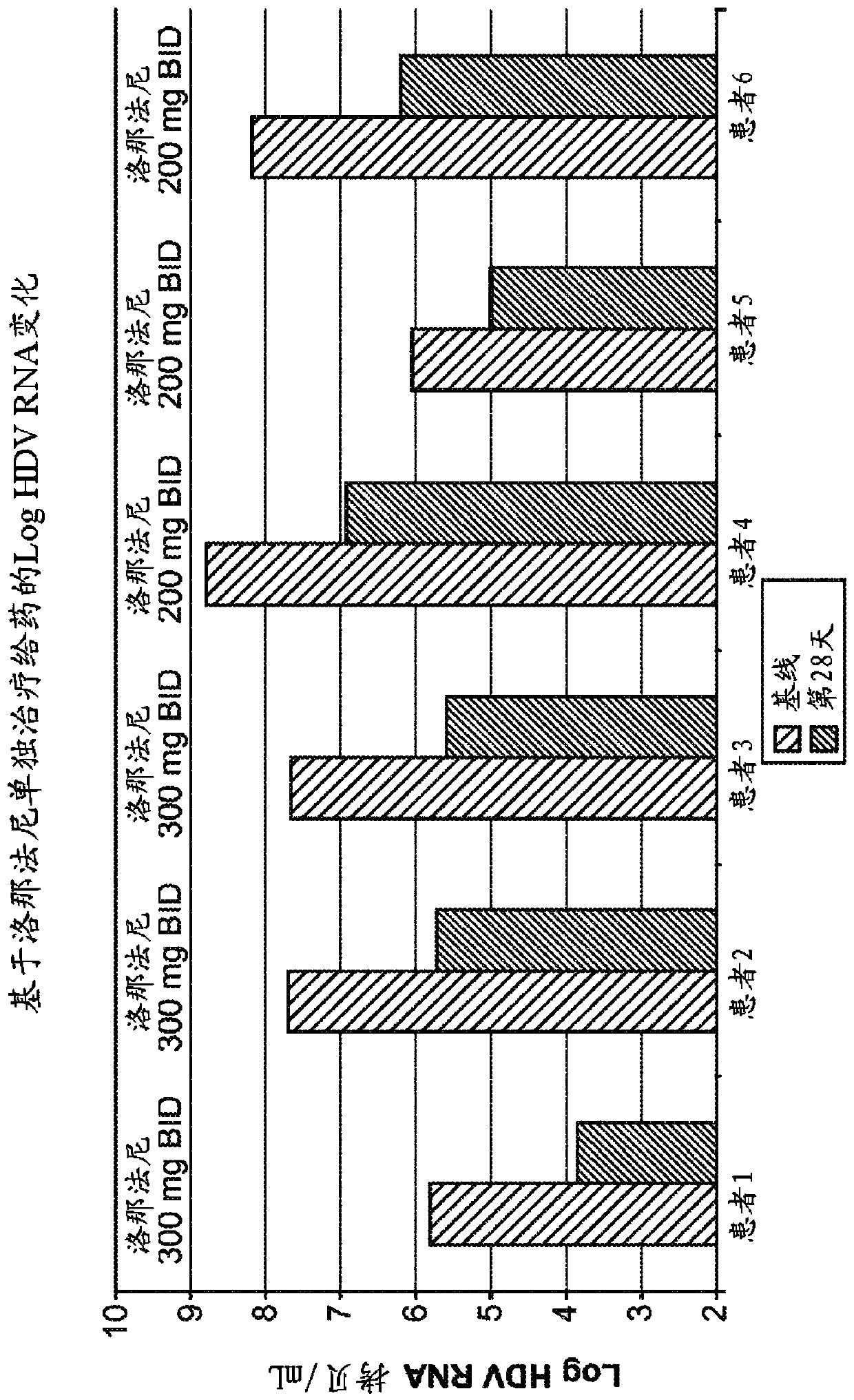Treatment of hepatitis D virus infection
A kind of hepatitis D, virus technology, applied in the field of treatment of viral hepatitis caused by hepatitis D virus infection, can solve the problem of no effective drug therapy and the like
- Summary
- Abstract
- Description
- Claims
- Application Information
AI Technical Summary
Problems solved by technology
Method used
Image
Examples
Embodiment 1
[0193] Example 1. Treatment of HDV patients with BID administration of 100 mg lonafarib
[0194] This example demonstrates the efficacy of lonafarib in reducing HDV RNA levels in chronic HDV patients. Eight Group 1 patients (all with chronic HDV) were treated according to the following: six patients (patients 1, 2, 4, 5, 6, and 8) with chronic hepatitis D (HDV) received lonafarib, two Patients (Patients 3 and 7) were administered placebo for 28 days. Six patients in the active treatment group were dosed at 100 mg BID (oral administration) for 28 days. The mean change from baseline to nadir in HDV RNA levels was -0.74 log HDV RNA copies / mL in the active-treated lonafarib group and -0.24 log HDV RNA copies / mL in the placebo group.
[0195] Patients 4, 5, 6, and 8 responded to treatment, as defined by a quantitative serum HDV RNA level decline from baseline to nadir of greater than or equal to 0.5 log HDV RNA copies / mL during active treatment. See Table 5 (showing the change i...
Embodiment 2
[0204] Example 2. Treatment of HDV patients with BID administration of 200 mg and 300 mg lonafarib
[0205] Six human subjects known to be infected with HDV were treated at 200 mg BID or 300 mg BID for 84 days; these subjects had documented baseline HDV RNA viral titers ranging from 5.8 log HDV RNA copies / mL to 8.78 log HDV RNA copies / mL.
[0206] The effect of 28 days treatment
[0207] At the end of the 28-day treatment period, among the six subjects, the mean change in viral load from baseline to Day 28 was -1.63 log copies / mL for the 200 mg BID group and -2.00 log for the 300 mg BID group copies / mL. See Table 6 and image 3 .
[0208] Table 6
[0209]
[0210] The Day 28 results demonstrate superior efficacy of the 200 mg BID and 300 mg BID dosing schedules over the 100 mg BID dosing schedule. However, additional efficacy is required for significant therapeutic benefit. Based on the results of BID administration of 200 mg and 300 mg lonafarib in HDV patients, we ...
Embodiment 3
[0213] Example 3. Use Combination of 100mg BID lonafarib and interferon in HDV patients
[0214] Three human subjects known to be infected with HDV were treated with lonafarib at a dose of 100 mg BID in combination with 180 μg Pegasys (peg interferon alfa-2a) weekly for 56 days (2 months); these subjects had been Baseline HDV RNA viral titers were recorded ranging from 4.34 log HDV RNA copies / mL to 5.15 log HDV RNA copies / mL, and ALT values ranged from 155-174 IU / L.
[0215] At the end of day 28, all three patients had decreased HDV RNA viral titers from baseline, ranging from -1.04 log HDV RNA copies / mL to -2.00 log HDV RNA copies / mL, and the The average decline in three patients was -1.8 log HDV RNA copies / mL. At the end of day 56, HDV RNA viral titers continued to decline in all three patients, with a mean viral load reduction of 3 log copies / mL at day 56. In addition, ALT values decreased from baseline until Day 56 in all three patients, continued to decline after ...
PUM
| Property | Measurement | Unit |
|---|---|---|
| molecular weight | aaaaa | aaaaa |
Abstract
Description
Claims
Application Information
 Login to View More
Login to View More - R&D
- Intellectual Property
- Life Sciences
- Materials
- Tech Scout
- Unparalleled Data Quality
- Higher Quality Content
- 60% Fewer Hallucinations
Browse by: Latest US Patents, China's latest patents, Technical Efficacy Thesaurus, Application Domain, Technology Topic, Popular Technical Reports.
© 2025 PatSnap. All rights reserved.Legal|Privacy policy|Modern Slavery Act Transparency Statement|Sitemap|About US| Contact US: help@patsnap.com



